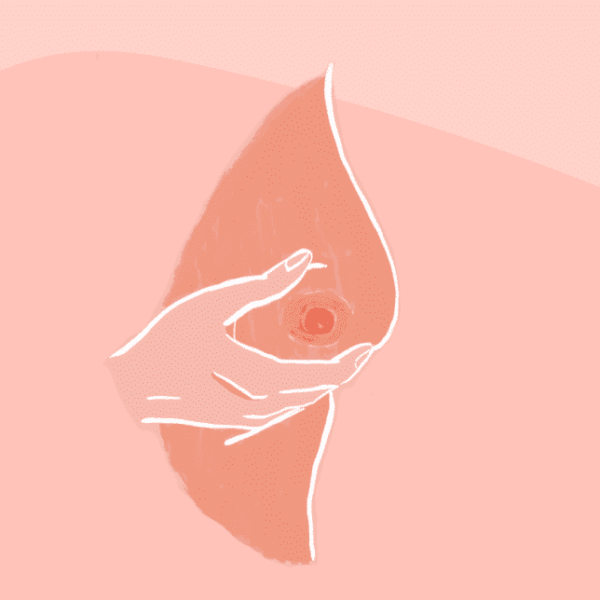Postpartum Breast Engorgement
Breast Engorgement

Engorged breasts are normal and expected in early postpartum. If you’ve just birthed your first baby and you're shocked at the firmness and fullness of your breasts, don’t be alarmed. This is your body doing its job; making and storing breastmilk after birth.
In the early weeks, engorgement is normal but it can also be uncomfortable and sometimes painful. It can cause your breasts to be full and hard and this is what cause pain and makes it tricky for your baby to latch. Essentially, your breasts can feel like they’re about to explode which is quite disconcerting. It’s best to be aware of it, understand why it occurs and ultimately prevent it from complicating your feeding experience. Rest assured that it won’t be like this forever; as your baby feeds and as your body adjusts to a breastfeeding rhythm, your breasts will settle. However, it’s important to understand what engorgement is and how you can prevent and treat it so it doesn’t hinder your breastfeeding journey or develop into mastitis.
What is Breast Engorgement?
Typically occurring between day 3-5 after birth, breast engorgement is a common symptom in early postpartum and signals that your milk has ‘come in’. This can be delayed if you’ve had a caesarean or traumatic birth and this is because breastfeeding – making and releasing milk – is dependent on your hormones in the first few weeks after birth. Sometimes trauma or medication can temporarily interrupt the hormones involved in breastfeeding – oxytocin and prolactin – but you can rectify this by practising lots of skin-to-skin with your baby. Engorgement can also occur later in your breastfeeding journey, when your baby starts to sleep longer, or misses or drops a feed.
Engorgement occurs when your breast tissue fills with milk, blood and lymphatic fluid, causing a dramatic increase in size and a very firm and full sensation. This fullness can make it hard for your baby to latch onto the nipple but it’s important to feed on demand so you can drain the breast and relieve the pressure. It can also be very uncomfortable for you and may cause significant pain. It’s also important to note that if you continue to have symptoms of breast engorgement up to six weeks after birth, you may have an oversupply of milk which is something that can be managed but may require professional guidance from a lactation consultant.
What are the Symptoms of Breast Engorgement?
Symptoms include:
- full and hard breasts that are firm and swollen
- both breasts are affected and are painful
- your nipples become stretched or flat, which makes it hard for your baby to latch.
What Causes Breast Engorgement?
Breast engorgement is caused by the sudden onset of milk production. Because it makes it difficult for your baby to latch, this can further complicate the issue because your baby isn’t draining the breast, which in turn can halt or slow milk production. If you’re making more milk than your baby needs, this can also create breast engorgement. It’s a common but temporary issue that should be addressed as soon as possible so it doesn’t lead to other more serious concerns.
How can I Prevent Breast Engorgement?
There are some simple and effective ways to prevent breast engorgement, including:
- Feeding your baby on demand (not by the clock). From birth your baby will typically feed 8-12 times in a 24 hour period
- Let your baby feed for as long as they need to
- Wake your baby if your breasts start to feel full and engorged
- Don’t give your baby other fluids; breastmilk is all they need
- Be mindful of using a breastpump; if you’re feeding on demand and pumping, you’re telling your body that it needs to make more milk than your baby currently requires.
How can I Relieve Breast Engorgement?
There are some practical ways you can relieve the pressure and pain of breast engorgement, including:
- – Ice packs reduce inflammation and work instantaneously to offer relief. It’s best to use them for 15 minutes at a time between feeds as the skin can be quite sensitive and you don’t want to cause irritation.
- – Make sure your bra isn’t digging in at all (take it off before a feed so you don’t feel restricted). Wearing reusable breast pads in your bra will help you catch the leaks.
- – Hand express before your baby latches to reduce the swelling
- – Practise reverse-pressure softening (put your fingers on the outside edges of your areola and press towards your chest wall to encourage the fluid back into your breast, as this makes it easier for your baby to latch)
- – Avoid using a pump as it can trick your body into thinking you’re feeding more than one baby
What are the Complications of Breast Engorgement?
If you’re not finding any relief from engorgement, it may lead to blocked ducts or mastitis which is something you’ll want to avoid, if possible. If engorgement persists despite your attempts to prevent and relieve it, you may have an oversupply of milk (not a bad thing but also something you’ll want to monitor). A lactation consultant can definitely help you navigate the challenges of oversupply, especially if your baby is constantly coming off the breast because of fast flow. In episode 410, Eleanor shares her experience with engorgement and oversupply.
Our Podcast Picks for You
Categories
Related Products
-
Breastfeeding Guide
3 reviews$19.95A guide to inspire pregnant women to prepare for their breastfeeding journey.
Get your copy of our Perineal Massage Guide in your inbox
Keep Reading
We think you might enjoy these articles

Why planning for postpartum is just as important as planning for birth – and how to do it right

Cracked Nipples: Causes, Treatment and Prevention

Caesarean Birth Recovery

What is a C-Section Shelf?
@AustralianBirthStories
Follow along with us
@AustralianBirthStories
Follow along with us
@AustralianBirthStories
Follow along with us
@AustralianBirthStories
Follow along with us
@AustralianBirthStories
Follow along with us
@AustralianBirthStories
Follow along with us
@AustralianBirthStories
Follow along with us
@AustralianBirthStories
Follow along with us
@AustralianBirthStories
Follow along with us
@AustralianBirthStories
Follow along with us
@AustralianBirthStories
Follow along with us
@AustralianBirthStories
Follow along with us





